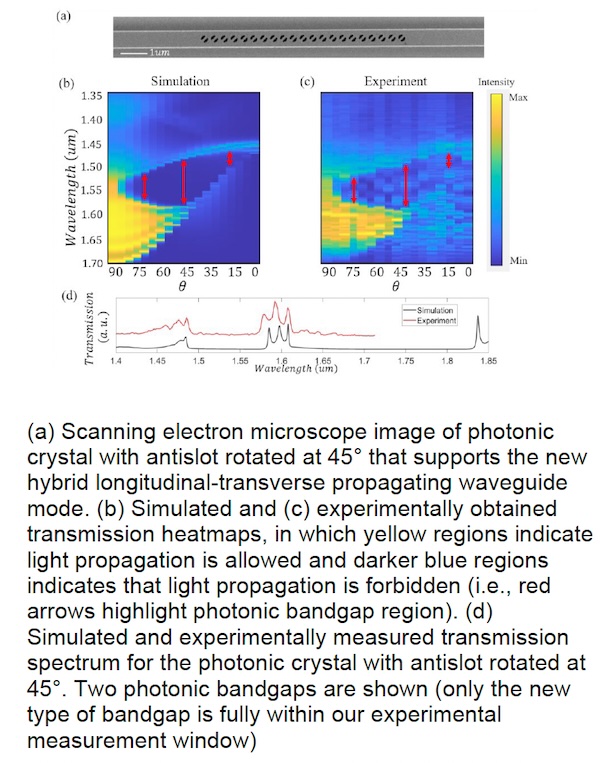Description:
Summary
Vanderbilt University researchers have developed groundbreaking photonic technology that can manipulate light in unprecedented ways, opening up new opportunities for high-speed, high-capacity data transmission. By rotating a dielectric bar within a photonic crystal unit cell, and arraying these unit cells along one direction to form an optical waveguide, the researchers create a new hybrid longitudinally and transverse polarized guided mode in which, for the first time, a longitudinally polarized field component in an optical waveguide supports net energy transport. The new hybrid guided mode leads to the formation of a new type of photonic bandgap and topological protection that can enable highly directional propagation with minimal back reflection.
Addressed Need
The ability to generate and control longitudinally polarized light has significant potential for transforming optical communications, sensing, and photonic computing. This unique light polarization state was previously believed to be unattainable in an optical waveguide. By leveraging this new photonic effect, future optical systems could achieve higher data rates, increased bandwidth, and enhanced transmission capabilities, including minimizing back reflections from lasers, compared to conventional approaches.
Key Benefits
With its proven experimental demonstration and strong theoretical foundation, this Vanderbilt technology represents a groundbreaking advancement in photonics with far-reaching implications for the future of data communications. The university is seeking licensing opportunities with industry leaders to further develop and commercialize this innovative light control technology.
Technology Features
Experimental results, including transmission heat maps and far-field scattering patterns, provide clear evidence of this new hybrid longitudinal-transverse electric field mode. Simulation and experimental data show excellent agreement, validating the novel physical phenomena underlying this technology.
